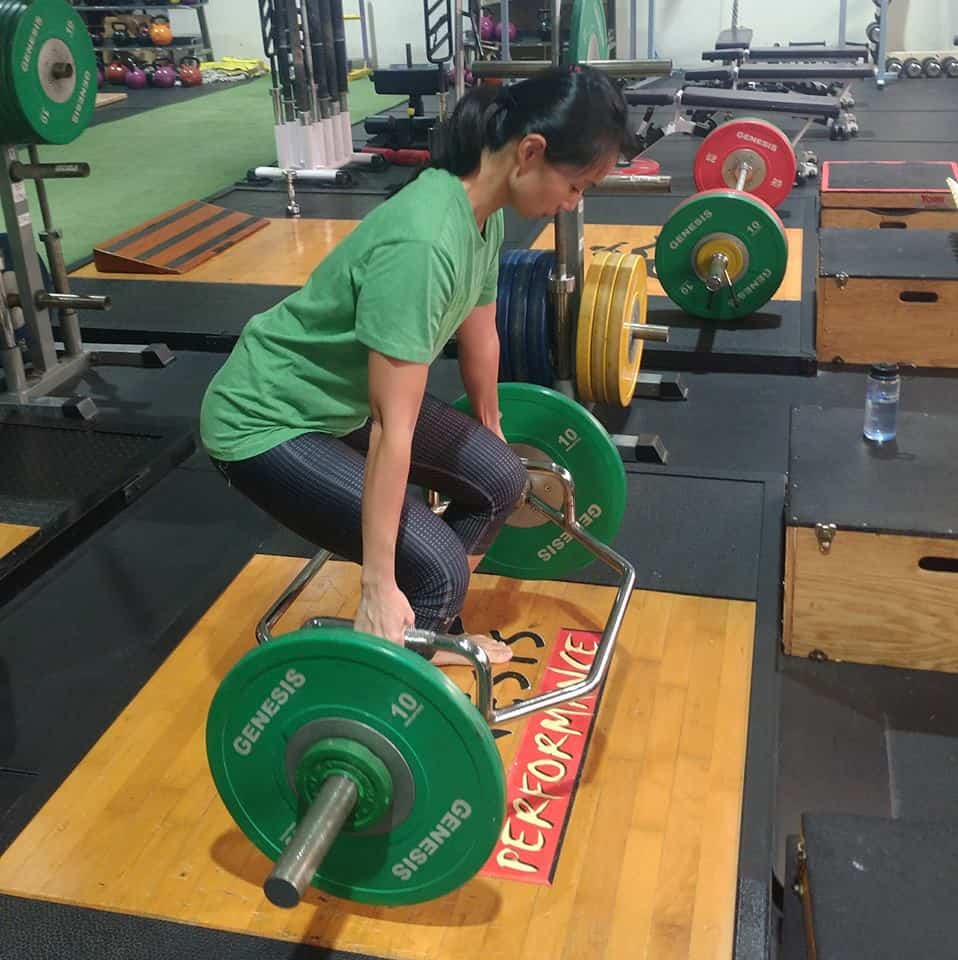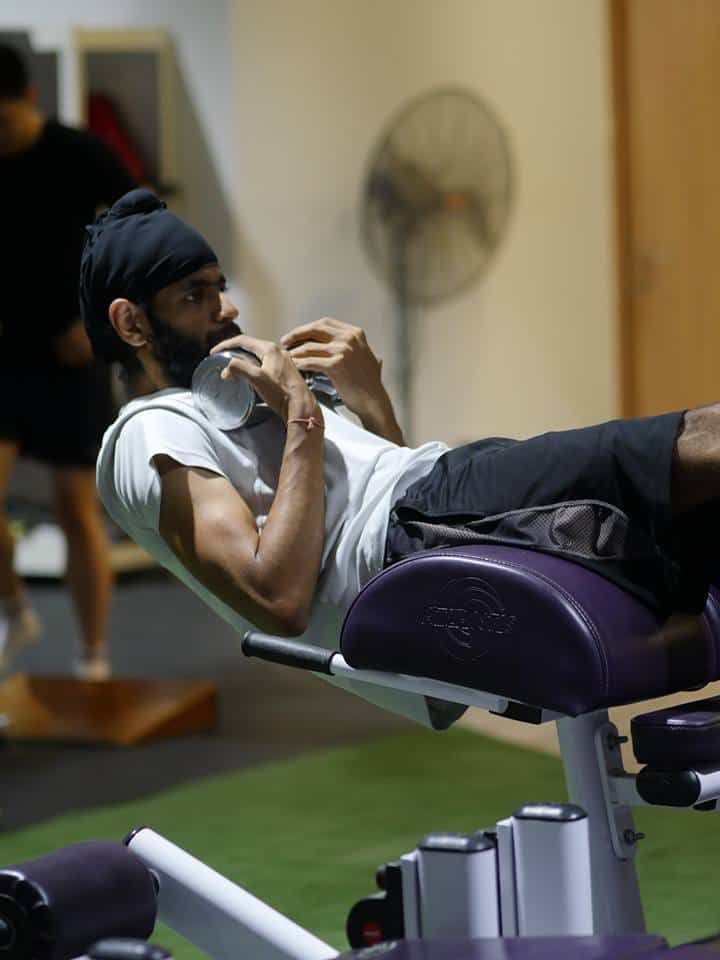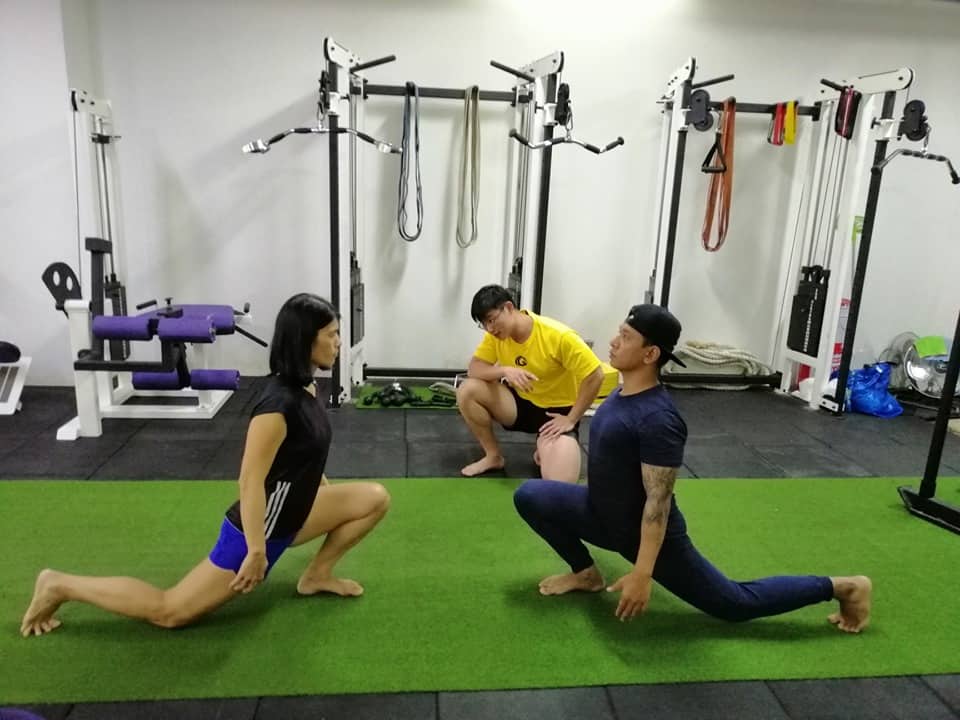Every week, Genesis Gym Singapore’s personal trainers get hundreds of questions from clients in our Singapore personal training gyms, as well as from the online coaching platform we have in Singapore as well as in China.
Here are the answers to even more common questions related to muscle building.
#1 What are the ideal reps and weights for muscle building?
There is no ideal number of repetitions (reps) or weight to use for muscle building. You should vary it so that different types of muscle fibres get trained. There are thousands of possible workout programmes but for most clients, I usually use 3-5 weeks on a lower rep and then 3-5 weeks on higher reps. this works well for about 80% of people until they are very experienced. Very experienced trainees may do better using different reps each day of the week. But this “very experienced group” is quite a small percentage of clients (5% or so).
#2 Does training with heavy weights build strength alone but not muscle size?
In the short run, this is quite true. Higher reps with moderate weight cause greater muscle damage and more blood flow and nutrients to the muscle. This is better for muscle building. Low reps and heavyweight do not have as much of this effect.
But in the long run, increasing strength using heavier weights is important for natural (steroid-free) trainees to keep building muscle.
The stronger you are the higher weight you can use for high rep exercises in the future. This leads to better long term progress. That’s why I usually design programmes alternating between a few weeks of high weight lower reps, and then a few weeks of lower weight and higher reps.

#3 Does training with lower weights and higher reps only reduce fat and not increase muscle?
In the beginning, light weights can build muscle but as you get more experienced you will tend to do better on lower reps and higher weight. This is because, over months and years, strength training converts muscle fibres to larger types which are better trained by heavier weights. So these larger fibres need more load to stimulate them to grow further in the future.
Fat burning is not influenced by training type as much as it is by lifestyle and diet. You will see lean athletes in all kinds of different sports… short distance sports like sprints, long-distance like triathlons, as well as middle-distance like team sports (basketball, rugby) and 800m runners. So you can use different exercise methods to lose fat.
However, do note that only a proper strength training program retains muscle as you lose fat and that is why it’s so important for health (losing lots of muscle is a very dangerous and stressful thing for your body!) as well as appearance.
#4 Do you need to train muscles to failure to make good progress?
For most clients, there is no need to go to failure each set. Especially for those big movements like squats. Usually, for these movements, I ask clients to go to failure for only 1 set per workout. And if they are not recovering well I ask them to leave 1-2 reps “in reserve” for every set.
In the long run, what determines success in muscle building and strength building is what you can do on your WORST day. Not the top workouts that you show on your Instagram or youtube videos.
#5 How long is the break between training each muscle group?
48-72 hours between the same muscle being used is a good guide. Small muscles like arms 48 hours, big muscles like lower back, glutes or quads, most people find that 72 hours between hard workouts is better for recovery.
So you can do longer, harder workouts with more recovery time, or you can do shorter workouts, not to failure and you can do the same muscle more frequently. But for natural trainees, you cannot do hard and frequent. You will not recover and you increase injury risk.

#6 How long should each workout be?
I like to keep workouts under 60 mins of training after warmup is completed. In fact, I find good results with 45 min workouts. After this time…
- Most people don’t have enough glycogen to perform well.
- Their stress hormones go up which affects recovery.
- Their mental focus drops which increase injury risk.
Quality is more important than quantity, especially for natural, steroid-free trainees. This is why you should not be following the workouts of the newest “Instagram influencer”. You never know what nutrient “support” they are on.
Each rep must have purpose because each rep uses up recovery ability and energy. Which is limited. Keep workouts challenging but short and you get better results because you recover better.
#7 What time of day is best to train at?
I prefer morning because in general because there are fewer distractions from work meetings or family emergencies. Also, muscle-building hormones tend to be highest about 4 hours after waking up so your exercise performance is likely to be better.
But I know that this is not possible for many people because of work or school. The important thing is that you build the habit of exercise and as long as you find a time that consistently suits you then that is the “ideal” time for you to train.
However, one consideration is that if you train heavy late at night I would eat a very high carb meal after training to drop stress hormones so that it does not affect your sleep as much.
#8 What should I do if I can’t feel my muscles contracting?
If you are training for strength and power using high speed or heavy weight, your nervous system is not recovered yet. Rest up to 5 mins between sets. And try again. If you still feel like you cannot move the weight or explode into the movement or you need to drop the weight more than 7%, then stop for the day. You have reached today’s limit for this exercise.
This is a problem for highly motivated people. They think short rest and huffing/puffing is the way to “feel” during training. But for strength building, you want long rest and total recovery between exercises.
However if you are doing higher reps because you are training for muscle or fat loss, you should usually rest shorter, drop the weight amount used and continue to push through the burn!
#9 What will happen if you don’t train for a few weeks?
Habits are most important. Even more important long term than a “perfect” training programme. So, if for a few weeks you cannot go to the gym, at least use bodyweight exercises and outdoor activities to remain active. Then when you come back you will not have dropped performance as much. And you won’t have gained too much body fat.

#10 How do you know if you are still a novice trainee?
Everyone is different but if you could test your strength using basic exercises, that is a good guide. Naturally, these tests must be done with perfect technique (if you don’t know what perfect technique is for your body type/shape then you are probably still a novice…) or join one of our Skillsfuture claimable body mechanic courses!
A good guide for men is 10 perfect chin-ups, 1.25x bodyweight bench press, 0.8x bodyweight shoulder press, 2x bodyweight deadlift and 1.5x bodyweight deep barbell squat.
In general, if you have been training consistently for 2-3 years, using a structured and science-based programme, you should be out of the “novice” phase.
#11 Which equipment is most useful in a gym (or a home gym)
I could get most results with adjustable weight dumbbells and an adjustable angle bench. So those two items are ideal for a home gym.
But for choosing equipment in a gym? I would include a cable machine. It has multiple exercises and angles and it gives a different kind of tension during the exercise so its a good compliment to dumbbells.
#12 Should you use joint protection (knee guards, wrist guards etc) when training?
For “protection” this is usually not necessary if you have no injury history, and have good exercise technique. And even if you do use them I suggest that you use them only when you are using heavy weights close to your maximum strength level or 1RM.
However, in colder countries or gyms you could use a light wrap or guard to keep joints warm which makes sure that the benefits of your warmup are maintained. Warmer joints are more flexible and also have higher oxygen delivery to the connective tissue.
#13 How important is a training partner when exercising in the gym?
In terms of safety, I don’t think there is a big benefit of having a training partner if your technique is good and you are not lifting maximum weights. And even if you are lifting heavy weights you can do exercises in the squat rack which has safety pins. So it is still safe.
So I don’t think it’s necessary for safety. But I do think that for some people finding a like-minded group of people to train with is good because it helps you keep healthy habits and show up for training even when you may not feel like it.
#14 Should I first do aerobic training first or strength training first?
I suggest strength training/anaerobic training first in most cases because you are trying to train strength and power which requires a higher percentage of muscle fibres to “switch on” to lift a heavy weight.
If you are already tired from hard aerobic excercise you won’t be producing much strength as you will have already tried out some of the muscle fibres.
However, for sportsmen it is good to learn to perform even under aerobic fatigue. So for athletes, there are times where I will ask them to perform strength training under aerobic stress or when tired.
Ideally, if you have time though, I would train these 2 methods on separate days as they training different systems of your body. If you train them both within a short period of time, in my experience the response is not ideal for EITHER workout and your progress is a little bit slower.
Hope these answers were useful to you!
So (totally unbiased opinion! haha) if you are looking for the best personal trainers in Singapore who customize your nutrition and training plans according to your body’s current condition. Please schedule a consultation at any of our Singapore personal training gyms and we will be glad to meet up to see how we can best work together.
